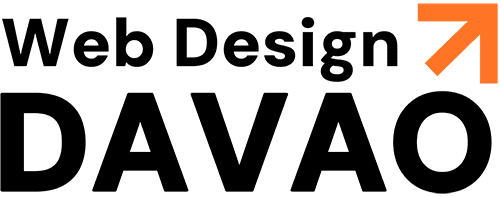The Power of a Well-Designed Website
In the digital landscape, your website often serves as the initial gateway through which potential customers interact with your brand. This initial interaction can significantly shape their perception of your business. A well-designed website does more than simply present information; it actively engages visitors, reflects your brand’s essence, and facilitates interactions that lead to conversions. Investing in website design and development is not just about aesthetics—it’s a strategic move that can drive your brand’s success by enhancing visibility, credibility, and user experience.
Understanding the Impact of First Impressions
How Your Website Reflects Your Brand’s Identity
The first impression your website makes is crucial. Within seconds of landing on your site, visitors form opinions about your brand’s credibility and value. This initial impression is largely shaped by your website’s design elements, including layout, colors, typography, and imagery. A website that aligns seamlessly with your brand’s identity—through consistent visual elements and messaging—helps establish a strong brand presence. For instance, a high-end fashion brand with a sleek, minimalist design conveys sophistication, while a tech startup might opt for a dynamic, innovative layout to reflect its cutting-edge approach.
The Role of Visual Appeal in User Engagement
Visual appeal is a critical factor in engaging users and keeping them on your site longer. A visually striking website with engaging graphics, a well-thought-out color scheme, and a clean, organized layout can captivate visitors and encourage them to explore further. High-quality images, compelling visuals, and an attractive design draw users in and invite them to interact with your content. Conversely, a cluttered or poorly designed site can overwhelm visitors, leading to frustration and increased bounce rates.
Building Trust and Credibility Through Design
The Importance of Professional Aesthetics
Professional aesthetics are essential for establishing trust with your audience. A website that looks polished and well-crafted signals to users that your business is competent and reliable. Elements such as a professionally designed logo, high-resolution images, and a cohesive color scheme contribute to a sense of credibility and professionalism. This trust is crucial in persuading visitors to engage with your brand, whether through making a purchase, signing up for a newsletter, or contacting you for more information.
How User Experience Influences Perceived Trustworthiness
User experience (UX) design plays a significant role in how trustworthy users perceive your brand. A website that is easy to navigate, with a clear structure and intuitive functionality, fosters a sense of reliability and professionalism. When users can effortlessly find information and complete actions without encountering obstacles, they are more likely to view your brand positively. Conversely, a difficult-to-navigate site can erode trust and drive users away, impacting their overall perception of your business.
The Crucial Connection Between Website Design and User Experience
Creating an Intuitive Navigation System
An intuitive and seamless navigation system is fundamental to a positive user experience. Users should be able to find what they’re looking for quickly, efficiently, and easily. A well-designed navigation menu, clear labels, and a logical structure help users understand where they are and where they can go next. This seamless navigation experience reduces frustration and keeps users engaged, enhancing their overall satisfaction with your site.
The Impact of Mobile Responsiveness on User Satisfaction
With mobile devices accounting for a significant portion of web traffic, ensuring that your website is mobile-responsive is essential. Mobile responsiveness means that your site adjusts seamlessly to different screen sizes and devices, providing an optimal viewing experience and ensuring user satisfaction. A mobile-responsive design ensures that users can easily navigate, read content, and interact with your site, regardless of the device they are using. This adaptability not only improves user satisfaction but also contributes to better search engine rankings, as search engines prioritize mobile-friendly sites.
Search Engine Optimization (SEO) and Website Design
How Design Choices Affect SEO Performance
The design of your website has a direct impact on its SEO performance. Factors such as site structure, navigation, and load times play a crucial role in how search engines index and rank your site. A well-organized site with clean, efficient code and optimized images contributes to better SEO by improving load times and ensuring that search engines can easily crawl and index your content. Additionally, incorporating relevant keywords and metadata into your design helps search engines understand the context of your content, boosting your site’s visibility in search results.
The Role of Site Speed and Performance in Search Rankings
Site speed and performance are critical factors in search engine rankings and user experience. A fast-loading site enhances user satisfaction by reducing wait times and preventing frustration. Search engines also prioritize sites that perform well, as speed is a key indicator of a positive user experience. Optimizing site performance through techniques such as image compression, caching, and minimizing code can improve load times, resulting in better search engine rankings and a more enjoyable experience for users.
Conversion Rate Optimization (CRO) and Design Elements
Designing for Conversions: Call-to-Actions and Landing Pages
Effective website design plays a crucial role in conversion rate optimization (CRO). Strategic placement of call-to-action (CTA) buttons and the creation of compelling landing pages can significantly impact user behavior. CTAs should be visually prominent, with clear, actionable language that guides users toward desired actions, such as making a purchase or signing up for a newsletter. Well-designed landing pages, tailored to specific campaigns or offers, can capture user interest and drive conversions by providing a focused, persuasive user experience.
How Layout and Design Influence User Actions
The layout and design of your website can greatly influence user actions and behavior. A clean, well-organized layout with strategically placed CTAs and engaging content encourages users to take desired actions. For example, placing important information and CTAs above the fold ensures that users see it without scrolling, while a logical flow of content guides users through their journey. Thoughtful design choices, such as using contrasting colors for CTAs and employing visual hierarchies, can effectively lead users toward conversion goals.
The Role of Website Development in Long-Term Success
Ensuring Scalability and Future-Proofing Your Site
Website development is about more than just launching a site; it’s about ensuring that it can grow with your business. Scalability is a key consideration, as your site should be able to handle increasing traffic and content as your business expands. Future-proofing involves selecting technologies and design practices that allow for easy updates and integration with new tools and features. By building a scalable and adaptable site, you ensure that it remains effective and relevant as your business evolves.
The Importance of Regular Maintenance and Updates
Regular maintenance and updates are essential for keeping your website in top condition. Routine checks for broken links, outdated content, and software updates help prevent issues that can affect user experience and site performance. Keeping your site updated with fresh content, security patches, and new features ensures that it remains engaging and secure. Regular maintenance not only enhances user satisfaction but also contributes to long-term site success by addressing potential issues before they become problems.
User Experience (UX) Design: More Than Just Pretty Pictures
The Psychological Impact of Design Choices on Users
Design choices have a profound psychological impact on users, influencing their emotions and perceptions of your brand. Color schemes, fonts, and layout all play a role in shaping user experiences. For instance, warm colors can create a sense of warmth and friendliness, while cool colors may evoke calm and professionalism. Understanding these psychological effects allows you to design a site that resonates with your target audience, creating a more engaging and impactful user experience.
How UX Design Contributes to Higher Engagement and Retention
Effective UX design is instrumental in fostering higher engagement and retention rates. A well-designed user experience keeps visitors interested and encourages them to return. Features such as personalized content, interactive elements, and easy navigation contribute to a positive user experience. By addressing user needs and preferences, UX design enhances satisfaction and loyalty, leading to increased engagement and long-term retention.
The Influence of Branding Consistency on Website Design
Aligning Your Website Design with Brand Identity
Branding consistency is crucial for building a strong and recognizable online presence. Your website design should align with your brand’s identity, incorporating visual elements such as logos, colors, and typography. Consistent branding across your website and other digital channels reinforces your brand’s message and helps establish a cohesive identity. This alignment not only enhances brand recognition but also contributes to a unified and memorable user experience.
The Benefits of Consistent Branding Across All Digital Channels
Consistent branding across all digital channels offers numerous benefits, including increased credibility and user trust. When users encounter a cohesive brand message and visual identity, they are more likely to view your business as reliable and professional. Consistency also facilitates easier recognition, making it simpler for users to remember and engage with your brand. By maintaining a unified brand presence, you strengthen your brand’s image and foster greater user loyalty.
Leveraging Website Design for Competitive Advantage
How Innovative Design Can Set You Apart from Competitors
Innovative website design can provide a significant competitive advantage by setting your brand apart from competitors. Unique design features, creative visuals, and interactive elements can capture attention and create a memorable user experience. By pushing the boundaries of conventional design, you can differentiate your brand and attract a loyal following. Innovative design not only enhances user engagement but also positions your brand as a leader in your industry.
The Role of Unique Design Features in Attracting and Retaining Customers
Unique design features play a crucial role in attracting and retaining customers. Interactive elements, custom animations, and personalized experiences can make your website stand out and keep users engaged. By offering distinctive and valuable features, you encourage users to return and continue interacting with your brand. These unique design elements help create a more engaging and satisfying user experience, fostering long-term relationships and loyalty.
Case Studies: Successful Website Design Stories
Real-World Examples of Successful Brands That Got It Right
Examining successful website design stories provides valuable insights into effective design practices. Brands that have excelled in website design often showcase creativity, user-centric design, and a deep understanding of their audience. For example, companies like Apple and Airbnb have set benchmarks in website design by combining sleek aesthetics with intuitive functionality, resulting in highly engaging and effective online experiences.
Lessons Learned from Design Successes and Failures
Studying design successes and failures offers important lessons for improving your own website. Successful designs often highlight the importance of user experience, branding consistency, and innovation. Conversely, failures may reveal common pitfalls such as poor navigation, outdated design, or lack of responsiveness. By learning from these examples, you can make informed design decisions that enhance your website’s effectiveness and contribute to your brand’s success.
Investing in Website Design and Development
Why It’s Worth the Investment
Investing in website design and development is a strategic move that can drive significant benefits for your brand. A well-designed website enhances user experience, builds trust and credibility, improves SEO performance, and supports conversion rate optimization. By prioritizing design and development, you create a powerful online presence that resonates with your audience and supports your business goals.
The Long-Term Benefits of a Professionally Designed Website
A professionally designed website offers long-term benefits that extend beyond the initial investment. It provides a solid foundation for your brand’s online presence, contributing to sustained engagement, higher conversion rates, and improved search engine visibility. By investing in a quality website design, you set your brand up for ongoing success and growth in the digital landscape.
Ready to elevate your online presence? Contact Web Design Davao today to discuss how our expert team can create a website that drives results and stands the test of time. Get in touch with us now!




